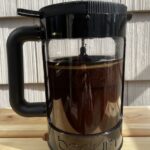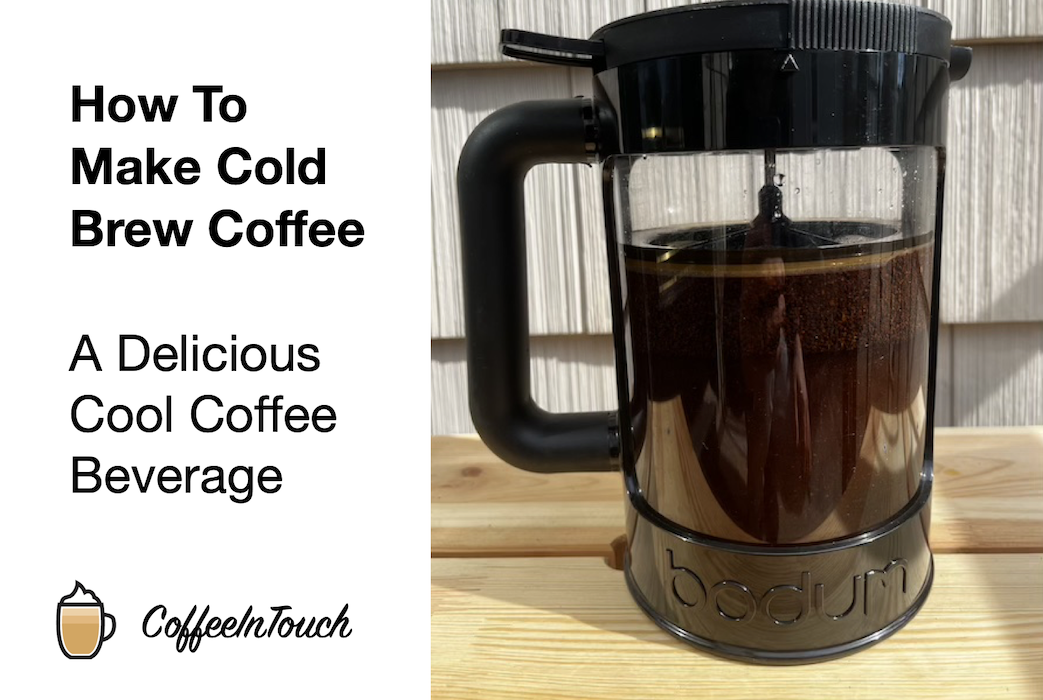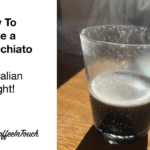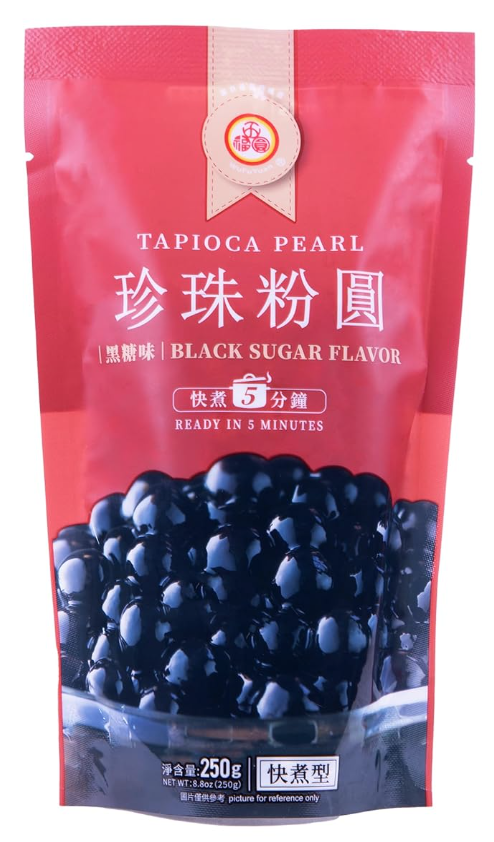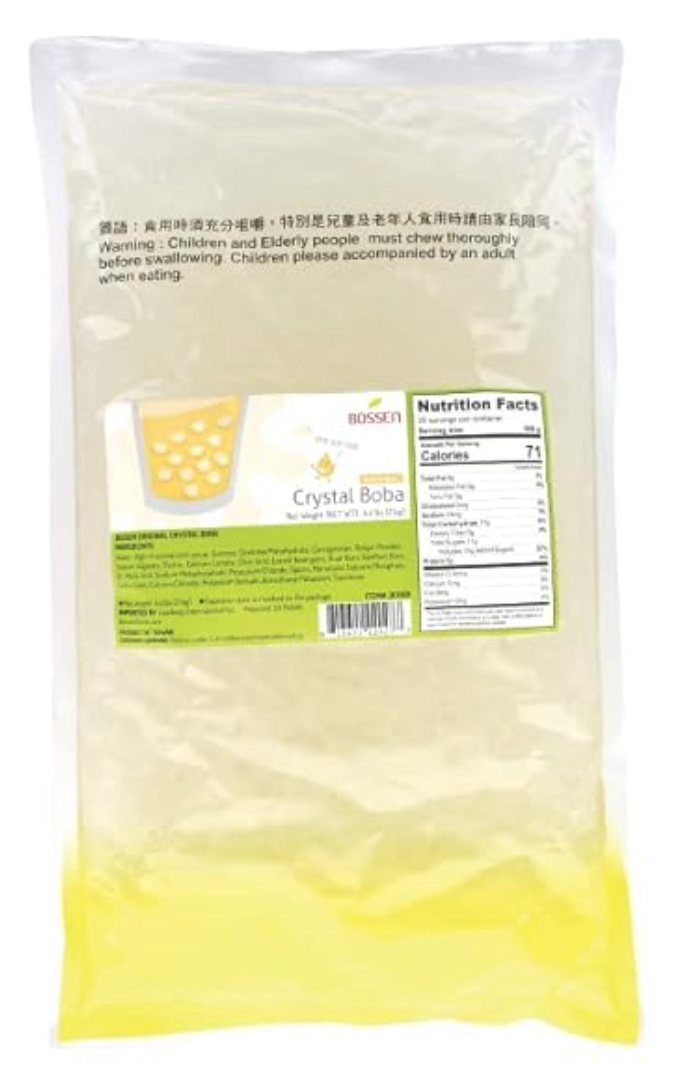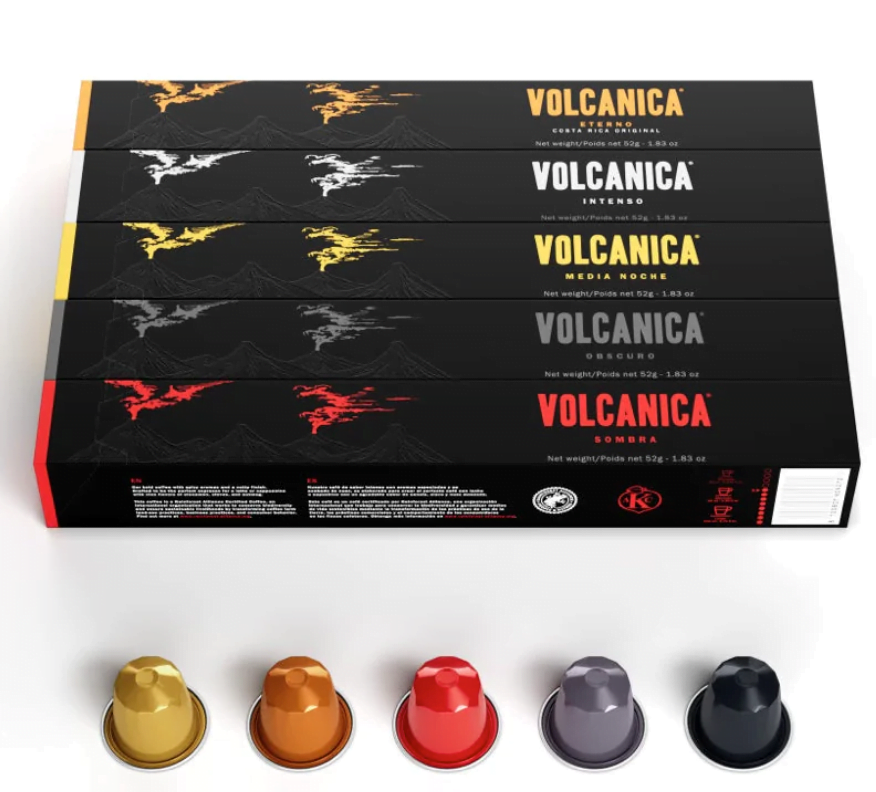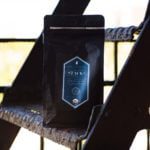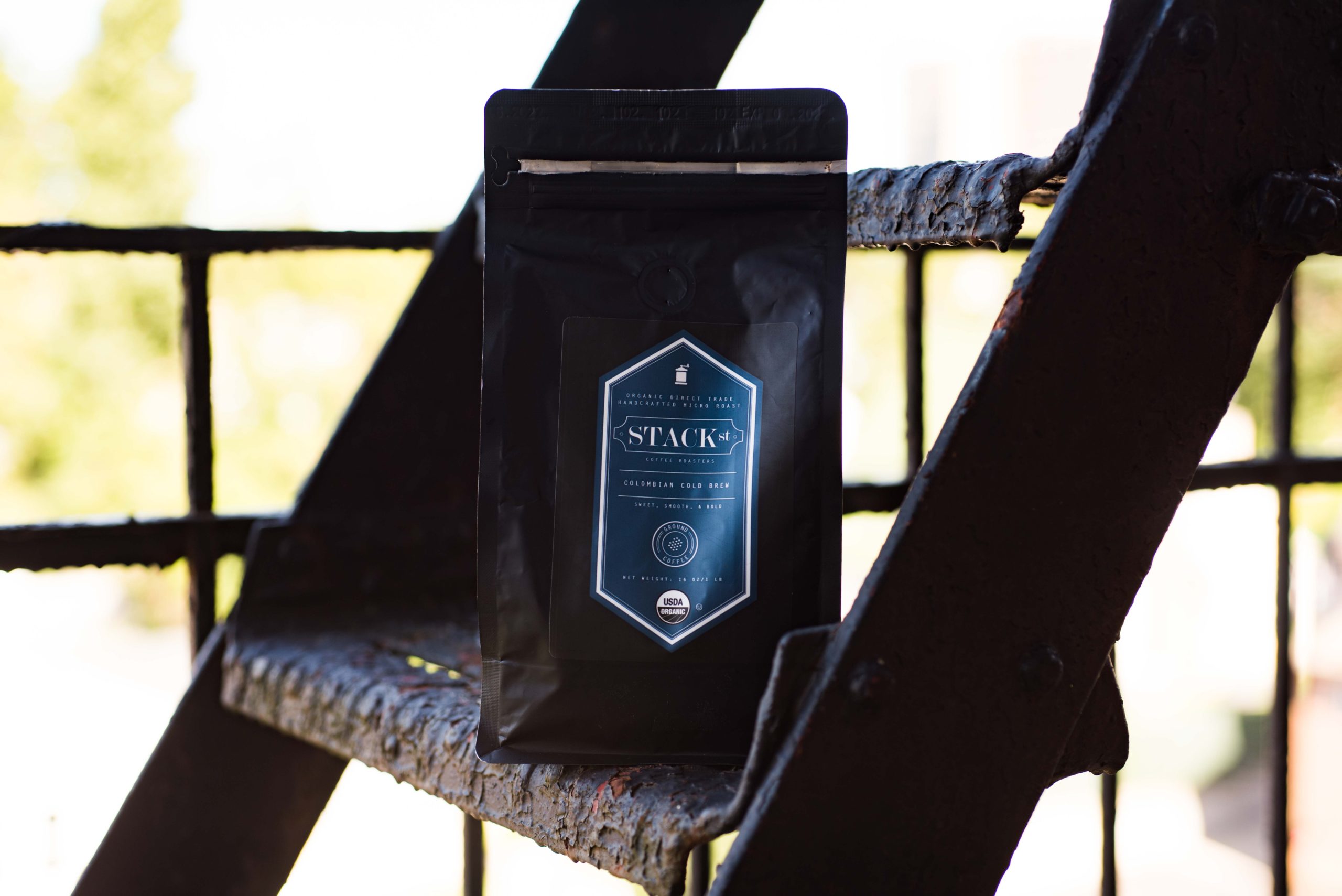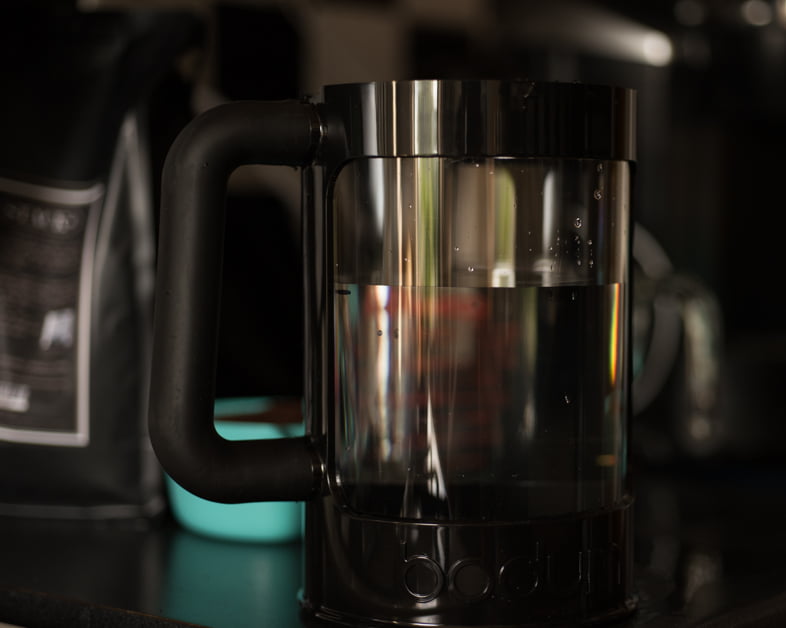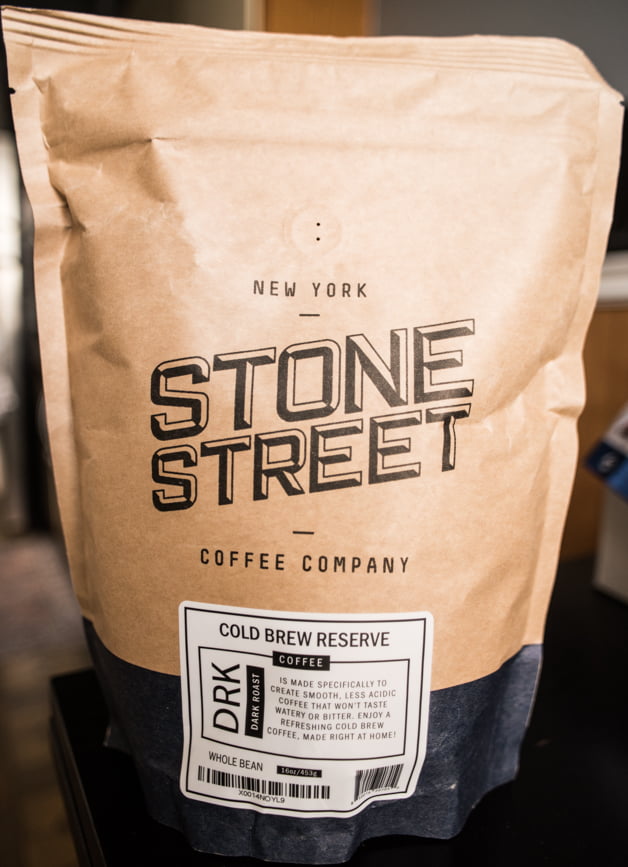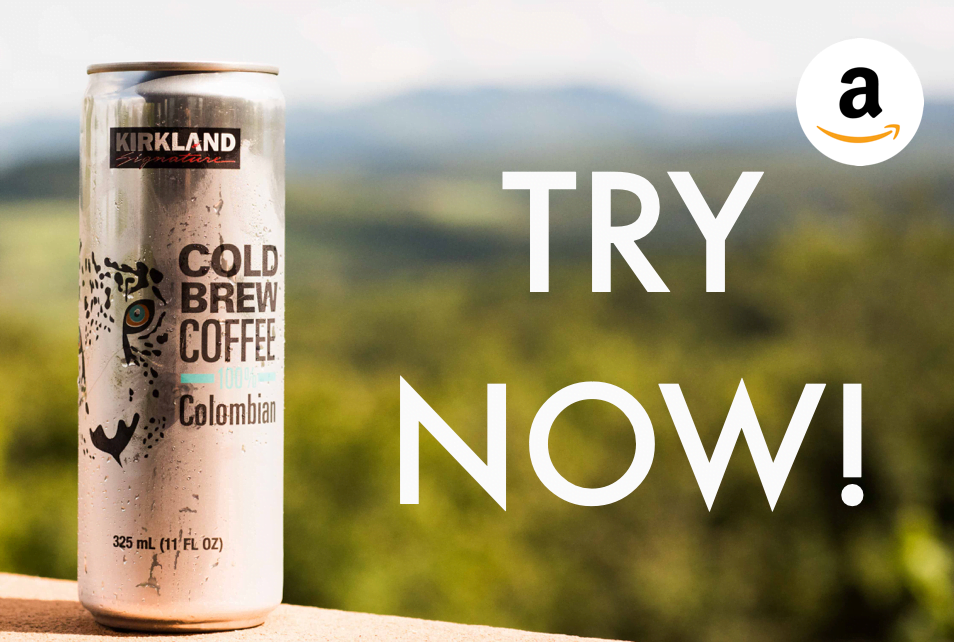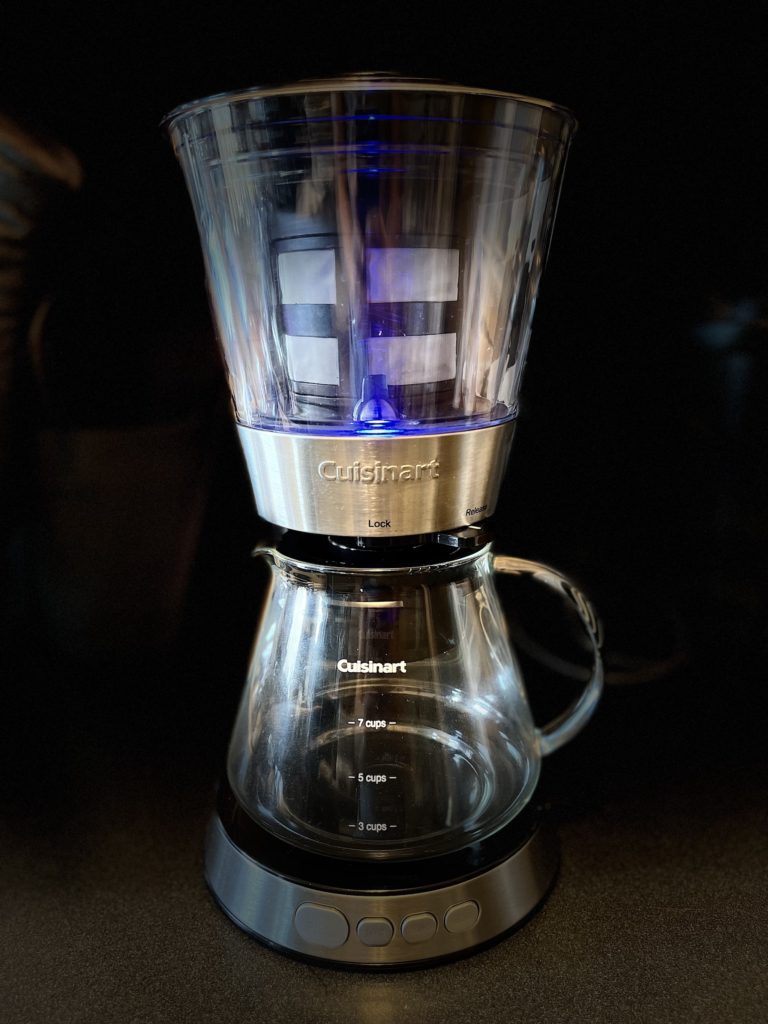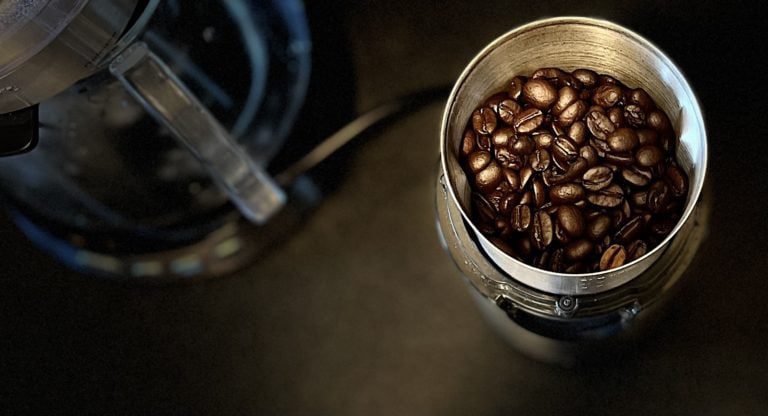matt
How To Make Cold Brew Coffee
What Is Cold Brew Coffee?
Cold brew coffee is a method of brewing coffee using cold water instead of hot water, resulting in a smooth and less acidic taste. In the cold brew process, coffee grounds are steeped in cold or room temperature water for an extended period of time, typically 12 to 24 hours. This slow and gentle extraction process allows the coffee to develop a unique flavor profile that is less bitter and more mellow than traditional hot coffee. The resulting cold brew concentrate can be diluted with water, milk, or other liquids and served over ice or heated. It can also be used as a base for other coffee drinks, such as lattes or iced coffee.
How To Make Cold Brew In a French Press
Cold brew coffee is popular among coffee lovers for several reasons. First, the lower acidity level of cold brew makes it easier on the stomach and less likely to cause acid reflux or heartburn. Second, the prolonged brewing process of cold brew allows for a more complex and nuanced flavor profile. Third, the smooth and less bitter taste of cold brew can be more appealing to people who don’t typically enjoy the taste of traditional hot coffee.
Coffee Beans: Costa Rica Aurora by Peet’s coffee
The ratio for cold brew concentrate typically varies depending on personal taste preferences and the strength of the coffee beans used. However, a common ratio for cold brew concentrate is 1:4 coffee to water.
Cold Brew Coffee Recipe:
- To make cold brew concentrate using this ratio, you would need to combine 1 part coarsely ground coffee beans with 4 parts cold water. For example, if you were using 1 cup of coffee beans, you would need to add 4 cups of cold water.
- Once you have combined the coffee and water, stir the mixture until the coffee grounds are fully saturated. Then, cover the container and let the mixture steep in the refrigerator for at least 12-24 hours.
- After the steeping time is complete, strain the cold brew concentrate through a fine-mesh strainer or cheesecloth to remove the coffee grounds. The resulting cold brew concentrate can be diluted with water or milk to make a cup of cold brew coffee, or it can be stored in the refrigerator for up to 1-2 weeks.
- Press the plunger down and enjoy.
While cold brew is shown to be made in a cold brew coffee maker, you can also just use a French press if you already have on on hand. To make cold brew in a French press, you’d make coffee just as you normally would but do not depress the filter until after 24 hours.
How Long To Steep Cold Brew?
Cold brew coffee typically requires a longer steeping time than regular coffee, because it is brewed using cold water rather than hot water. The exact steeping time will depend on your personal taste preferences, but a good starting point is to steep the coffee for about 12-24 hours.
How Long Does Cold Brew Last?
To ensure that your cold brew coffee lasts for up to 10 days, it is important to store it properly. After brewing, strain the coffee into an airtight container and place it in the refrigerator. Avoid exposing the coffee to air, as this can cause the coffee to oxidize and spoil more quickly.
What Is The Best Coffee Bean For Cold Brew?
Generally we recommend a medium-light roast as they are less acidic after 12-24 hours of steeping. We recommend Costa Rica Aurora by Peet’s coffee because it is low acidity, bold and super smooth. It can also come as a whole bean coffee so it can be ground at the time of making for freshness. It can additionally be ground to specification (coarse).
What Is The Difference Between Cold Brew and Iced Coffee?
Cold brew is brewed using the cold brewing process that takes many hours to extract a strong flavor and makes for a very strong caffeinated beverage once fully infused. Iced coffee uses the hot brewing process and is typically traditional coffee that has been cooled either by sitting out and reaching room temperature and poured over ice.
How Much Caffeine Is There In Cold Brew?
The amount of caffeine in cold brew coffee can vary depending on the type of beans used, the brewing time, and the ratio of coffee to water. On average, cold brew coffee contains about 65 milligrams of caffeine per 8-ounce serving, which is about the same as a cup of drip coffee. However, some cold brew coffee can contain as much as double that amount.
If you are sensitive to caffeine or trying to limit your caffeine intake, you may want to opt for a smaller serving size or choose a coffee with a lower caffeine content. You can also try diluting your cold brew coffee with water or milk to reduce the caffeine content.
Cold Brew Too Strong?
Sometimes cold brew concentrate can be a bit hard on the digestive system so add some ice or filtered water to dilute the beverage. You can also pour a shot of cold brew concentrate and use more milk for a cold brew latte. Interested to learn more? Check out our recipe!
Overall, cold brew coffee is a refreshing and unique alternative to traditional hot coffee, perfect for those who enjoy a refreshing, smooth and less acidic coffee experience.
How To Make Iced Coffee With Keurig
Iced coffee can be a real treat when you’re out and about, but what if you’d like to make iced coffee at home with your Keurig? It’s simple and delicious, but if you’re not careful, you can easily end up with a watered-down drink that is disappointing. In this article, we’ll lay out a few simple ideas for brewing iced coffee at home with a Keurig, no matter which model you’ve got.
Keurig Over Ice Setting
The “Over Ice” setting on Keurig coffee makers is designed to brew a stronger, more concentrated cup of coffee that can withstand the melting ice without becoming too watered down. It’s specifically meant for iced coffee preparation.
When you use the “Over Ice” setting, the Keurig brews a smaller cup size (usually 8 ounces) directly over a cup filled with ice. The result is a chilled and more concentrated coffee, perfect for iced coffee lovers.
Iced Coffee K Cups
Keurig offers a variety of K-cups specifically designed for use with the “Brew Over Ice” setting. This setting is intended for brewing a stronger and more concentrated cup of coffee that can be poured directly over ice.
Keurig’s Brew Over Ice K-Cups come in various flavors and styles, including iced coffee, iced tea, and fruit-based beverages. We like the Green Mountain Dark Roast because it’s rich, bold, and made with 100% Arabica coffee.
These K-Cups typically feature a specially formulated blend of coffee or tea designed to withstand dilution.
Chill The Mug
We recommend keeping whatever glass, mug, etc., you’re planning to use in the fridge or freezer. This will help cool the water and prevent the ice from melting too quickly, diluting the coffee.
Keurig K-Slim, K-Supreme, K-Elite “Brew Over Ice”
The “Brew Over Ice” button on Keurig machines adjusts the temperature and brewing time to optimize the coffee flavor and concentration for iced coffee. When the button is pressed, the Keurig machine lowers the brewing temperature to around 192°F (89°C) to compensate for the ice that will be added later. The brewing time is also adjusted to ensure that the coffee is more concentrated, which helps to balance the dilution caused by the melting ice.
WE RECOMMEND: Keurig K-Supreme Plus
Iced Coffee With Keurig Without “Brew Over Ice”
Select the coffee you will make, and place the pod in the Keurig.
If you have it, use the “shot” feature. This will brew a strong, small shot of coffee into your mug.
If the Keurig does not have a “shot” feature, some machines have a “strong” button. Use that on the smallest available size of coffee. The Keurig will pre-fill the coffee pod to start the steeping process and then continue to dispense water for the desired size.
If your Keurig does not have either of these features, select the smallest setting available. When the water begins to fill the mug, turn off the machine! Turn it back on, open/close the top, and run it again on the smallest setting. This method mimics the “strong” button function by wetting the coffee and brewing it a few seconds later.
At this point, either cover and place in the fridge to reduce the temperature or add ice to chill the coffee.
What Is a Macchiato
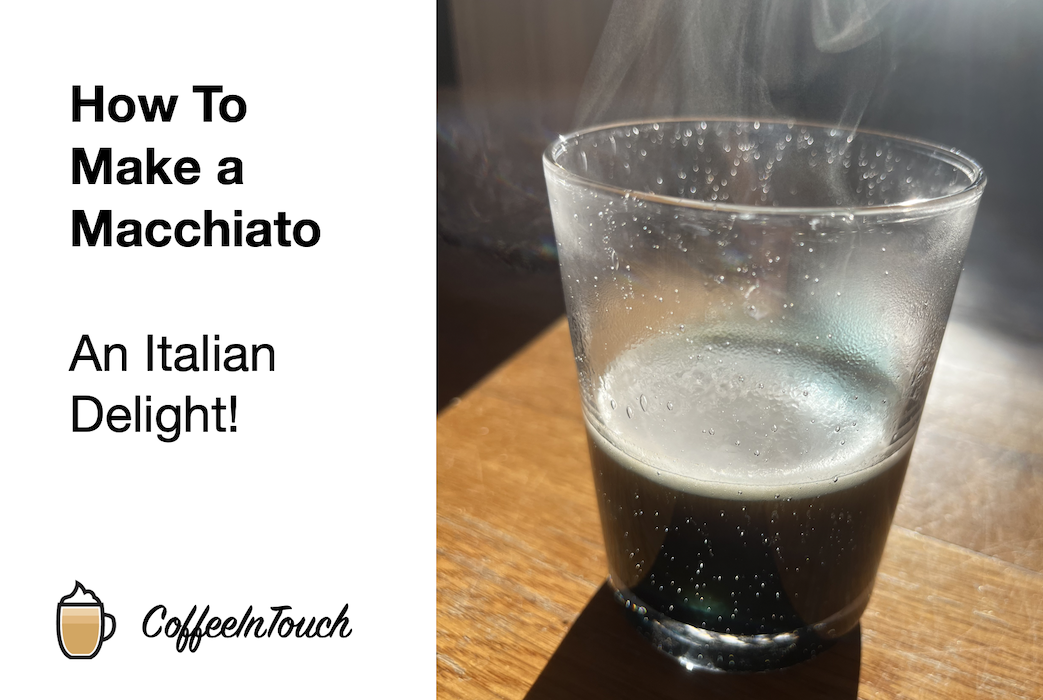
Have you ever found yourself intrigued by the rich tapestry of coffee culture? One sip can transport you to the bustling cafes of Italy or the trendy specialty coffee shops around the world. Among the myriad of coffee creations, there’s one beverage that often piques curiosity: the macchiato. In this blog post, we’ll embark on a flavorful journey to demystify the macchiato, uncover its origins, explore its variations, and even learn the art of making one ourselves.
The Origins of Macchiatos
Tracing back to Italian roots
Let’s begin our exploration by delving into the Italian origins of the macchiato. The word “macchiato” itself translates to “stained” or “marked” in Italian. In Italy, macchiatos have been a part of the coffee culture for centuries, and they hold significant cultural value. We’ll uncover the historical context and understand why Italians have such a deep appreciation for this beverage.
Evolution and adoption of macchiatos worldwide
Like any good thing, the macchiato didn’t remain confined to Italy alone. As coffee gained popularity globally, the macchiato traveled across borders, adapting and evolving in different countries. We’ll explore how various cultures have put their own unique spin on the macchiato, creating a range of delightful variations.
Understanding Macchiato: What Sets It Apart?
Defining the macchiato
Before we dive into the variations, let’s understand the essence of a macchiato. A macchiato is an espresso-based beverage that strikes a perfect balance between the intensity of espresso and the velvety texture of milk. Unlike other espresso drinks, the macchiato has a distinctive preparation process that gives it a unique flavor profile.
Macchiato variations around the world
Prepare your taste buds for a global tour of macchiatos! From the popular caramel macchiatos to the intriguing flavored macchiatos, each variation has its own personality. We’ll take you on a flavorful adventure, exploring the unique characteristics and taste profiles of these delightful concoctions.
Mastering the Art of Making a Macchiato
Ingredients and equipment needed
Now that we’ve whetted your appetite, let’s equip you with the necessary tools to craft your own macchiato masterpiece. We’ll provide you with a handy list of ingredients and highlight the specific equipment required for brewing a delicious macchiato at home.
Step-by-step brewing process
Brewing the perfect macchiato requires precision and a dash of artistry. Fear not, for we’ll guide you through the step-by-step process, ensuring that you achieve the optimal balance of flavors. Along the way, we’ll share insider tips and tricks that will elevate your macchiato-making skills.
Latte art: Elevating the macchiato experience
No exploration of macchiatos would be complete without mentioning the captivating world of latte art. Discover the importance of latte art in the macchiato experience, and we’ll even provide you with a brief tutorial on creating basic latte art designs to impress your friends and loved ones.
Pairing Macchiatos with Complementary Flavors
Sweet treats to accompany your macchiatos
Now that your macchiato is ready, let’s explore the realm of perfect pairings. We’ll introduce you to a variety of delectable desserts and pastries that harmonize beautifully with the flavors of a macchiato. From creamy cakes to flaky pastries, these sweet treats will take your macchiato experience to new heights.
Savory options for macchiato enthusiasts
For those who prefer savory delights, we haven’t forgotten you. We’ll suggest an array of savory snacks and light meals that complement the richness of a macchiato. Whether you’re craving something savory or looking for a quick bite, we’ve got you covered.
Macchiatos Across Coffee Cultures
Explore the macchiatos of different regions
Coffee culture is a rich tapestry woven across the globe, and each region adds its own unique twist to the macchiato. We’ll take you on a virtual tour, exploring the macchiatos of various coffee cultures, such as the Scandinavian and Australian interpretations. Discover the cultural significance and popularity of these regional variations.
Macchiatos in specialty coffee shops
Specialty coffee shops have become hubs for coffee connoisseurs, pushing the boundaries of coffee craftsmanship. We’ll showcase the innovative macchiato creations found in these establishments. Learn about the emphasis on high-quality ingredients, skilled baristas, and the artistry that goes into crafting the perfect specialty macchiato.
Macchiatos: Common Questions Answered
Addressing misconceptions about macchiatos
Misconceptions often swirl around macchiatos, causing confusion among coffee enthusiasts. We’ll debunk common misconceptions and set the record straight, ensuring that you have a clear understanding of what makes a macchiato truly unique.
Common queries regarding macchiatos
Do you find yourself pondering the difference between a macchiato and a latte? We’ll answer commonly asked questions and provide expert insights into the world of macchiatos. From ordering tips at coffee shops to perfecting your home brewing techniques, consider us your macchiato sherpa.
How To Make a Macchiato
There are two main types of macchiato: espresso macchiato and latte macchiato. Here are the steps for making each type of macchiato:
Espresso Macchiato:
- Pull a shot of espresso into a small cup or glass.
- Steam a small amount of milk until it is frothy and velvety.
- Spoon the milk foam onto the top of the espresso shot, creating a small “stain” or “mark” on the surface of the drink.
- Serve immediately and enjoy the rich, bold taste of the espresso with a hint of sweetness from the milk foam.
Latte Macchiato:
- Steam milk until it is velvety and thick, creating a dense foam.
- Pour the steamed milk into a glass, filling it about 3/4 of the way.
- Gently pour a shot of espresso over the milk, creating a “stain” or “mark” on the surface of the drink.
- Spoon any remaining milk foam on top of the drink.
- Serve immediately and enjoy the creamy, smooth texture of the latte macchiato with a hint of boldness from the espresso.
Overall, macchiatos are relatively simple to make and can be customized to suit individual taste preferences. The key is to use a high-quality espresso or coffee and to add just enough milk to create the desired balance of flavors.
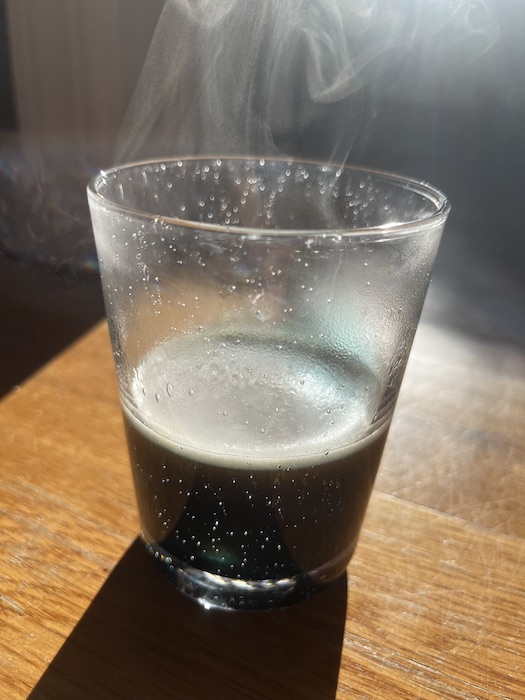
There are different variations of the macchiato, with the espresso macchiato being the most traditional. It is said to have originated in Northern Italy, where it was typically served as a morning beverage alongside a pastry or biscuit. In recent years, the latte macchiato has become increasingly popular, particularly in the United States and other parts of the world.
Overall, the macchiato is a classic coffee beverage with a rich history and a strong tradition in Italian coffee culture.
What Is a Macchiato?
There are two main types of macchiatos:
- Espresso macchiato: This is made by adding a small amount of milk foam to a shot of espresso. The milk foam is added on top of the espresso and is usually spooned onto the drink.
- Latte macchiato: This is made by adding a small amount of espresso to steamed milk. The espresso is added to the milk, which is steamed to create a thick, creamy foam. The milk foam sits on top of the espresso and is usually spooned onto the drink.
Macchiatos are typically served in small cups or glasses, and they have a strong, bold taste with a hint of sweetness from the milk. They are a popular espresso-based drink that can be customized to suit individual taste preferences.
Why Does Starbucks’ Iteration Look Different?
The Starbucks macchiato is prepared differently and more in line with a latte with some kind of flavored sauce on top. It is very different in its presentation to a house brewed macchiato a barista would make.
What Is a Caramel Macchiato?
A caramel macchiato is a popular espresso-based drink that combines espresso, steamed milk, foam, and caramel syrup. The drink is typically served in a clear glass or cup to showcase the layers of the drink.
How Much Caffeine Is In a Caramel Macchiato?
Caffeine content depends largely on the type of bean used, the roast, the amount of coffee brewed, along with how it is prepared. You can assume that a typical cup of espresso will contain roughly 65-75mg of caffeine.
How To Make Caramel Sauce
Caramel sauce is easy to make! We love the recipe from Food Network’s Ree Drummond. It is essentially brown sugar, half-half, butter, salt, & vanilla extract.
How To Make a Caramel Macchiato
To make the macchiato into a caramel macchiato, you’ll need caramel sauce that you can make yourself, or buy it from a retailer like Amazon. All you need to do is add some of the caramel sauce on top of the foam and you’re ready to enjoy. If you want to be fancy like Starbucks, make a grid shaped pattern on the foam!
To make a caramel macchiato, the following steps are typically followed:
- Steam and froth the milk. The milk is typically steamed and frothed using an espresso machine or milk frother to create a velvety, creamy texture.
- Add caramel syrup. A few pumps of caramel syrup are added to the bottom of the cup before the milk and espresso are added. The caramel syrup adds a sweet, rich flavor to the drink.
- Pull the espresso shot. An espresso shot is pulled and added to the cup.
- Pour in the milk. The steamed milk is poured over the espresso shot, creating a layer of creamy milk.
- Add foam. The milk foam is spooned on top of the drink, creating a layer of frothy milk.
- Drizzle caramel syrup on top. Additional caramel syrup is drizzled on top of the foam for extra sweetness and decoration.
The result is a sweet, creamy, and indulgent coffee drink that is popular among coffee enthusiasts around the world.
How To Make Boba Tea (AKA Bubble Tea)
Hanging in Flushing Queens during my high school years, it was only a matter of time before my friend asked if I wanted to try boba tea. “What is boba tea?” I asked, and they bought me one. Boba tea is a Taiwanese tea drink that contains tea, some variation of milk, sweetener, and tapioca balls which give boba tea its unique look and taste. My first foray into bubble tea was incredible! I never experienced anything like it before, and I was impressed with the taste.
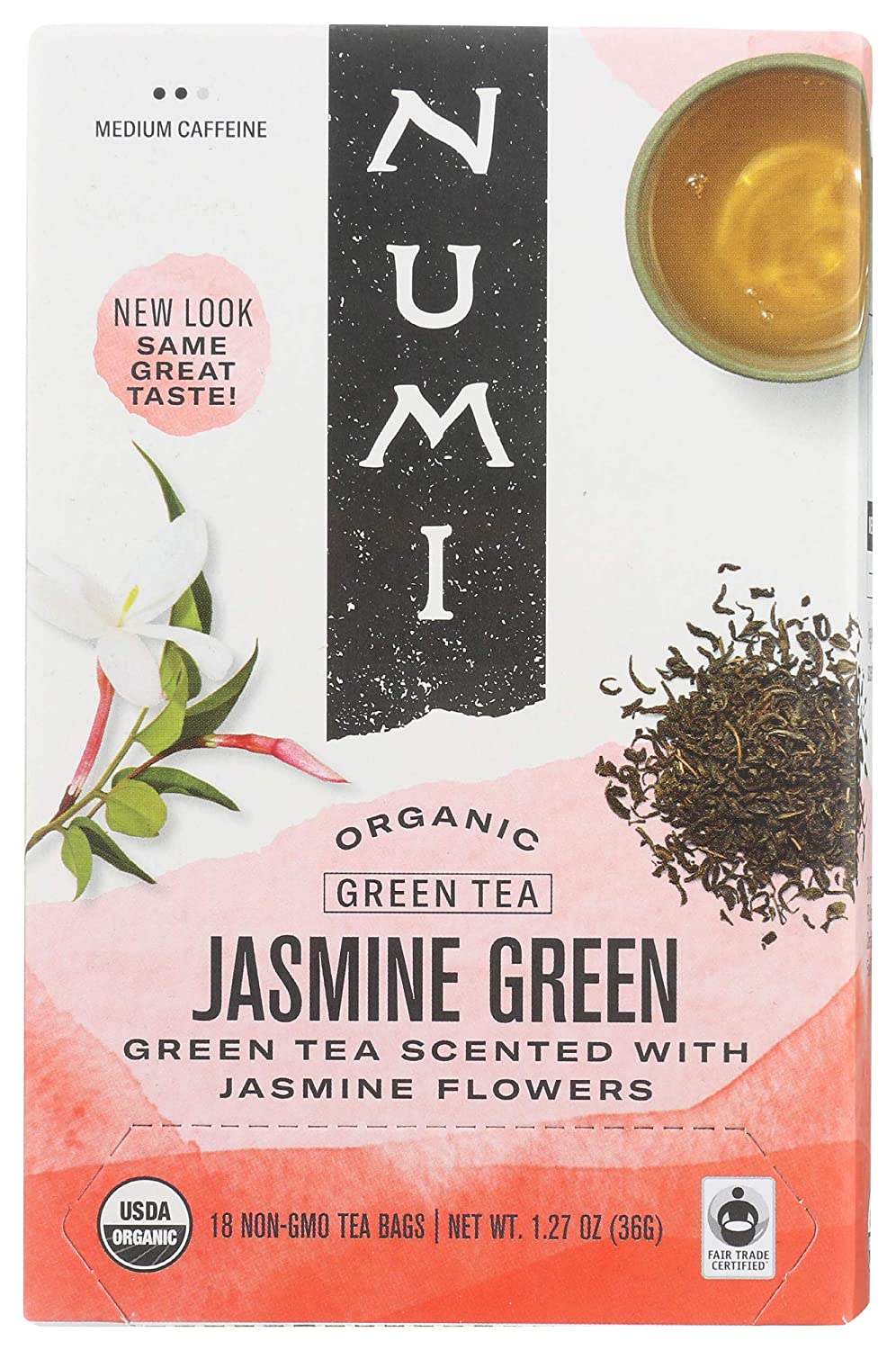 Numi Jasmine Green Tea
Numi Jasmine Green Tea
How To Make Boba Tea
Ingredients:
1 cup dried tapioca pearls (boba)
1 1/2 tablespoons of honey
Enough water to cover the pearls in a pan
Steps:
1: Bring the water to a boil in a saucepan
2: Add the dried tapioca pearls, stir
3: Boil the tapiocas for 2-3 minutes / until they begin to float
4: Bring the flame down to a medium heat. Cook for 2-3 minutes until they are tender.
Tip: Don’t drain until you’re ready to use in your boba tea! The tapiocas will harden if left out of the water.
How To Make Boba Tea (AKA Bubble Tea)
Plain Boba Tea:
1: Brew the tea, in this example we’re using English Breakfast Black Tea.
2: Add as much ice as you like!
3: Add honey
4: Drain the tapioca pearls, add to the drink
5: Add your choice of milk
6: Enjoy!
A lot of times these drinks are served with thick straws so make sure you pick some up!
Fruit Boba Tea:
1 cup of brewed tea of choice. Jasmine or black tea recommended.
1 cup of fresh fruit chunked
1 cup of milk (your choice)
Use as much as ice you like!
Because Thai bubble tea is diluted with milk and ice, use a strong flavored tea. Jasmine or black tea are perfect examples as they are robust and will keep their flavor from getting lost.
Where To Buy Tapioca Pearls
Before we can make bubble tea, we’ll need tapioca pearls! You can pick them up at most Asian food markets or Amazon.
How To Cook Tapioca Pearls
Tapioca pearls are balls of starch made from the root of the cassava plant. Tapioca pearls are used in bubble tea to add texture to bubble tea. Make sure to cook only what you will use in the recipe! Tapioca pearls tend to stiffen up after draining from cooking!
We used Tapioca Pearls that are black sugar flavored. The key is that these are easy to cook with and only take about 5 minutes.
What Is Crystal Boba?
As we just discussed, boba tea comes in many varieties, one called crystal boba. What is it, you might ask? Crystal boba is named for its translucent appearance and is a gelatin-esque pearl made from the konjac plant, which is a Southeast Asian plant also known as devil’s tongue. Konjac plays an important role in Asian medicine and has numerous health claims, including detoxification, and is used in weight loss supplements.
Crystal Boba vs Boba
Regular boba pearls are made from the tapioca plant’s root, which gives the pearls their starchy yet gelatinous texture. Crystal boba is made from the konjac plant and similarly from the root, giving it a similar texture to regular boba.
Wrapping Up Making Boba Tea at Home
You’ve probably seen bubble tea shops, or maybe you’ve even tried it at Starbucks (they’re testing bubble tea recipes now!). Strawberry, black tea, jasmine, mango, and melon don’t scratch the surface! There are literally hundreds of flavors and variations available. We hope you found this article helpful in explaining how to make boba tea/bubble tea is. Also, we hope you try the recipes out for yourself! Thanks for reading.
What Is a Red Eye Coffee?
A Red Eye, eloquently named to signify its eye-opening abilities, is a coffee drink that intertwines the soothing body of regular brewed coffee with the potent zest of espresso. The dance of these two varieties culminates in a beverage that boasts a strong and bold flavor and provides an extra kick of caffeine, acting as a trusty ally to those seeking an energetic start to their day or a midday rejuvenation.
A Symphony of Flavors: The Making of Red Eye Coffee
The foundation of Red Eye lies in the beautiful amalgamation of its core components. A typical preparation involves brewing a cup of regular coffee and inviting a shot of espresso to join the mix. The resulting beverage is an orchestra of flavors, with the espresso adding a vigorous intensity to the mellow and inviting notes of the brewed coffee.
Biohazard Super Strong Coffee
Though simple in its formulation, the Red Eye is a testament to the magic that can occur when two seemingly distinct elements converge.
For those crafting this beverage at home, a double espresso is often recommended to elevate the coffee’s robustness and intensity, ensuring that the boldness of the espresso charmingly pierces through the serene landscape of the brewed coffee.
Customization: A Personal Touch to Your Brew
One of the enchanting qualities of Red Eye Coffee is its customizability. This beverage graciously welcomes your personal touches, allowing you to tailor it to your unique palate. Whether you’re a devotee of the classic black coffee or have a penchant for a creamier concoction, the Red Eye obliges. Add sugar, milk, cream, or explore with other flavorings to create a beverage that is distinctly yours.
Selecting the Right Coffee: A Guided Choice
Choosing the right coffee to create your perfect Red Eye can feel like a daunting expedition, given the many available options. Without anchoring on a specific product, let’s navigate through some general guidelines:
- For the Brewed Coffee: Seek a blend that provides a solid yet not overpowering base. A medium roast often serves well, offering a balanced profile of acidity and sweetness without overshadowing the boldness of the espresso.
- For the Espresso: A dark roast is traditionally preferred for its potent, caramelized sweetness and lower acidity, which boldly carves through the brewed coffee, ensuring its presence is distinctly felt in the Red Eye.
How To Make Red Eye Coffee
Here are step-by-step instructions for making Red Eye coffee:
Ingredients:
- Freshly brewed regular coffee
- One shot of espresso
Instructions:
- Brew regular coffee: Start by brewing a cup of regular coffee using your preferred method. You can use a drip coffee maker, French press, or any other method you usually use to make coffee. Brew enough coffee for one serving, and make it strong to ensure a robust flavor.
- Prepare the espresso shot: If you have an espresso machine, grind your espresso beans to a fine consistency and extract a single shot of espresso according to the instructions for your machine. If you don’t have an espresso machine, you can use an espresso stovetop pot or a portable espresso maker to make your shot.
- Combine coffee and espresso: Once your regular coffee is brewed and your espresso shot is ready, pour the shot of espresso into your cup of brewed coffee. The ratio of coffee to espresso can be adjusted to your preference. If you prefer a milder taste, use a smaller amount of espresso. For a stronger flavor, use a larger shot.
- Stir and customize: Gently stir the coffee and espresso together using a spoon to ensure they are well mixed. At this point, you can add any additional flavorings or sweeteners if desired. You may add sugar, milk, cream, or any other ingredients to personalize your Red Eye coffee to your taste.
- Enjoy: Your Red Eye coffee is now ready to be enjoyed! Sip and savor the bold and caffeinated flavors of this energizing beverage. Remember to consider the higher caffeine content of Red Eye coffee when consuming it, especially if you are sensitive to caffeine.
That’s it! You have successfully made Red Eye coffee. Experiment with different ratios of coffee to espresso and customize it to your liking with various additions. Cheers!
How To Make Red Eye Coffee With Nespresso
Nespresso
To make a red eye coffee with a Nespresso machine, you will need:
- A Nespresso machine
- A Nespresso coffee pod (strong coffee flavor recommended)
- A cup of brewed or black coffee
Instructions:
- Turn on your Nespresso machine and allow it to heat up.
- Insert a Nespresso coffee pod into the machine and select the desired cup size.
- Brew the coffee and pour it into a mug.
- Take your cup of black or cursed coffee and pour it into the mug with the Nespresso coffee.
- Stir the two coffees together and enjoy your red eye coffee.
If you do not have a Nespresso, brew your favorite coffee however you normally would. Brew a shot of espresso mix the two and serve.
Conclusion
The Red Eye Coffee, with its robust personality and versatile nature, has carved its niche in the hearts of coffee lovers around the globe. Whether you’re delving into its depths for the first time or are a seasoned aficionado, the Red Eye stands ready to offer a vibrant, customizable experience, ensuring each sip is a new adventure in the expansive world of coffee.
Macchiato vs Latte
Espresso, the foundation of Macchiato and Latte, is known for its intense flavor and thick crema. Italian espresso drinks are cherished worldwide for their rich flavors and varied preparations. Among these, the Macchiato and Latte stand out as popular choices. This post is about the Macchiato vs Latte, comparing and contrasting them within the broader context of Italian espresso culture.
Macchiato vs Latte
The critical difference lies in the milk-to-espresso ratio. The Macchiato offers a strong espresso taste with minimal milk, while the Latte provides a balanced mix of milk and coffee. Culturally, the Macchiato is often seen as a quick, strong pick-me-up, whereas the Latte is viewed as a leisurely, creamy drink.
The Macchiato
Originating in Italy, the traditional Macchiato is a simple yet bold drink. It’s made by adding a small dollop of foam to a shot of espresso. Variations like the Caramel Macchiato and Hazelnut Macchiato have added flavors and sweetness, making the Macchiato versatile. It takes various forms in different regions – the Cortado in Spain, Galão in Portugal, and Macchiato Freddo in Italy. Today, the Macchiato symbolizes modern coffee culture, offering a more robust espresso flavor with just a hint of milk.
The Latte
The Latte, also rooted in Italy, is espresso mixed with more steamed milk and a light froth. It’s customizable, often flavored with syrups, and adorned with latte art. Initially a breakfast drink in Italy, the Latte has evolved into a global coffee shop staple, known for its creamy texture and milder coffee flavor compared to the Macchiato.
Here’s a table showing the differences in types of espresso drinks:
| Drink | Description | Milk Content | Flavor Profile |
|---|---|---|---|
| Espresso | Concentrated coffee made by forcing hot water through finely-ground coffee beans. | None | Strong and intense |
| Macchiato | Espresso with a small dollop of foamed milk. | Very little (foam only) | Strong with slight milkiness |
| Latte | Espresso mixed with a larger quantity of steamed milk, topped with a small amount of foam. | High (steamed milk) | Creamy and mild |
| Cappuccino | Equal parts espresso, steamed milk, and frothed milk. | Equal parts with espresso | Balanced, with noticeable coffee and milk flavor |
| Americano | Espresso diluted with hot water, similar in strength to drip coffee but different in flavor. | None | Milder than espresso |
| Ristretto | A more concentrated version of espresso, made with the same amount of coffee but half the water. | None | Richer and more flavorful than espresso |
| Lungo | An espresso shot made with more water, resulting in a milder flavor. | None | Milder than espresso |
Other Notable Italian Espresso Drinks
Beyond Macchiatos and Lattes, the Italian espresso palette includes drinks like the Cappuccino, known for its equal parts of espresso, steamed milk, and froth, and the Americano, a diluted espresso for a milder flavor. Each Italian espresso drink has its unique preparation and taste profile, offering a wide range for coffee enthusiasts.
Conclusion
Macchiatos and Lattes, while both stemming from Italian espresso traditions, cater to different tastes and moments. The exploration of these drinks reveals the diversity and richness of coffee culture. As the world of coffee continues to evolve, these drinks stand as testaments to the timeless appeal of Italian espresso.
Stack Street Organic Cold Brew Coffee
For the introductory post of Coffee In Touch we are looking at a nice tall bag of Stack Street Organic Coffee, roasted in Garnerville NY in the Lower Hudson Valley north of the city. They say for every good cuppa it all starts with the beans. Self-labeled as a “handcrafted micro roast” of Arabica beans from Columbia, the bag promises a sweet, smooth, and bold taste and we’re here to test it out!
Stack Street Organic Cold Brew Coffee
Grind Stats & Pics
Grind Level: Coarse
Roast Level: Dark Roast
Size: 1 Pound
Taste: Well balanced and BOLD!
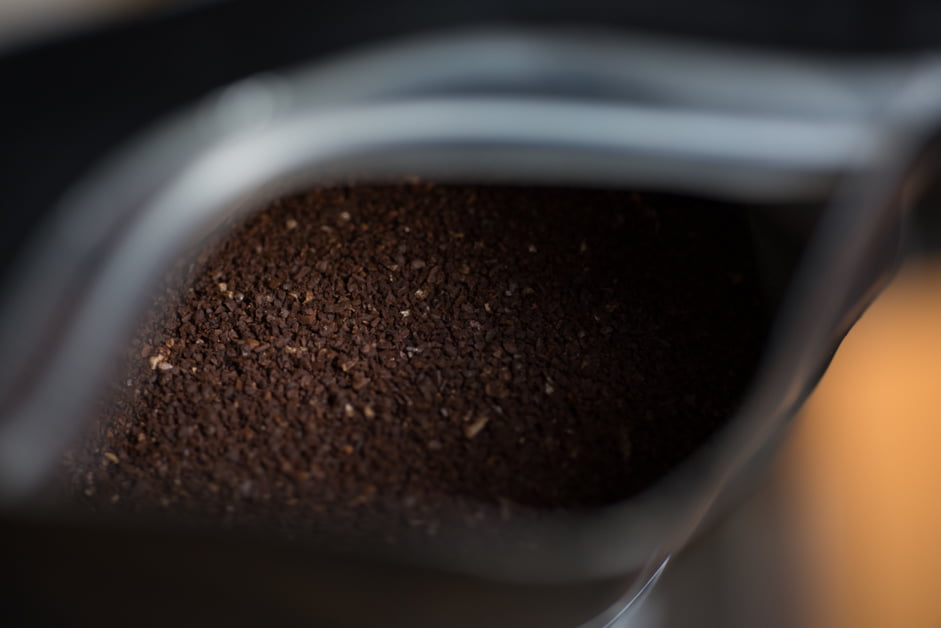
Philosophy
If you’re like me you find yourself going to the fridge to pull the cold brew out and realize it was never made. While you might be temporarily disappointed that you have to wait, you can feel slight relief that a very decent batch can be made in as little as 12 hours.
I like this coffee because it’s coarse, which means you get great surface area during the brew which is very important. Equally important is it allows the plunger to press down super easily. If you’ve ever tried using a fine grind you can expect it to be extremely difficult to press down and there might even be some grinds in your cup which is less than ideal.
Recipe (12-24 hours)
Using a 51 ounce cold brew coffee maker (I really like the Bodum) fill about halfway with water or 4 1/2 cups of water. I tend to go a little over than under because I want more bang for my buck, so if you want to fill it closer to the top I would suggest you let it steep for 24 hours to get more flavor from it. You can be fancy like me and make a mark on your maker so it’s easier to get the ratio for cold brew coffee right 🙂
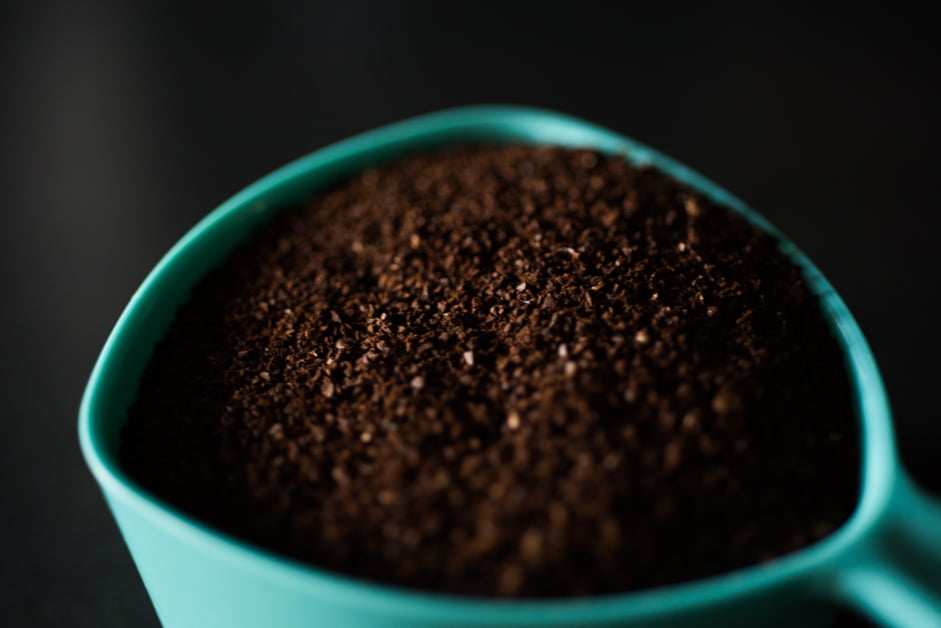
Pour the grounds over the water.
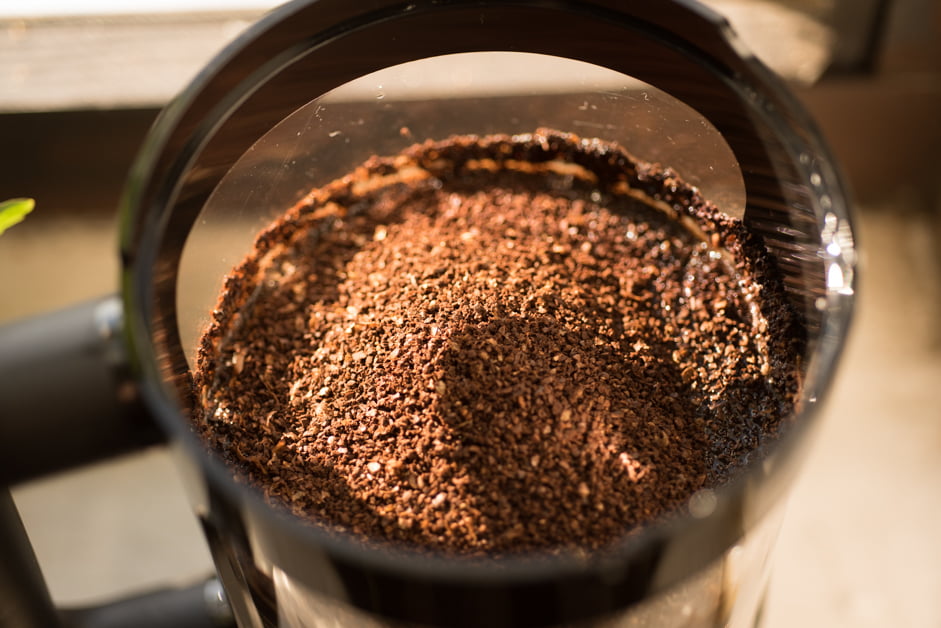
Place in the fridge for 12-24 hours
Press plunger to the bottom, enjoy.
Tip: I like to press the plunger down below the surface of the water when I start the brew to ensure no grounds float at the top and end up sitting dry. Dry coffee means less coffee, and I think you want as much as you can get!
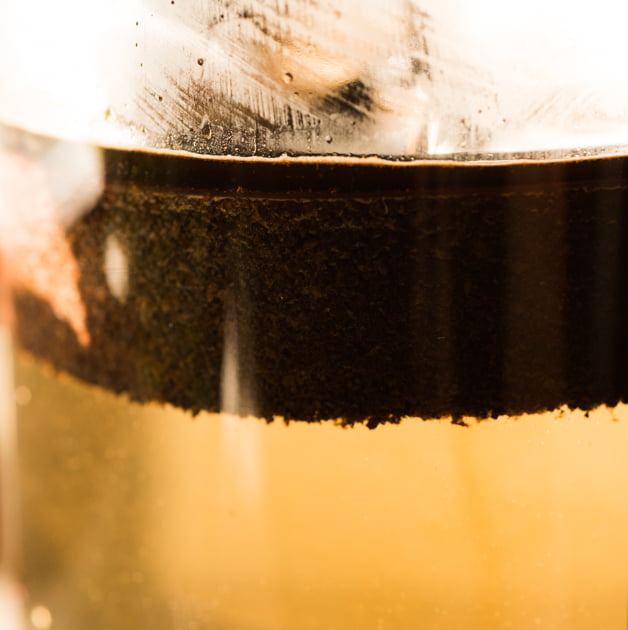
Verdict:
This is my go-to cold brew! The taste profile is accurate, and very smooth. If you dig something that comes in very even-keeled, it’s worth the try.
Please comment and share this with your buds!
On the hunt for more coffee?
Check out my write up on the Stone Street Dark Roast! It’s excellent!
Stone Street Coffee Cold Brew – Awesome Varieties
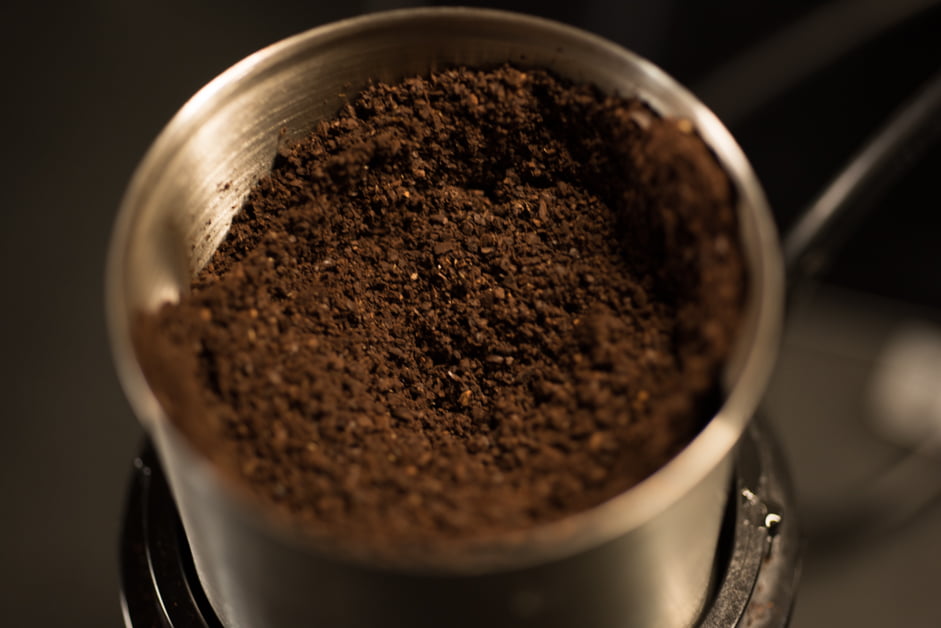
Based in New York City, Stone Street Coffee specializes in roasting coffee and is known for its commitment to quality. They procure premium beans globally and roast them in limited quantities to accentuate each bean’s distinct flavors and traits. Offering an extensive range of single-origin coffees and blends, their products are available for purchase on their website and at specific retail outlets. The company is also acclaimed for its cold brew coffee, crafted by immersing coarsely ground beans in cold water for a prolonged duration, resulting in a brew that’s both smooth and low in acidity.
Today we’ll be looking at Stone Street Coffee’s Organic roast from my home town of Brooklyn, New York. Described as a serious coffee for serious New Yorkers, Stone Street Coffee prides itself on sourcing organic, fair trade, rain forest safe, and Kosher beans. This coffee is focused in as being a cold brew coffee based on its dark roast. Dark roast coffee is ideal for cold brew because it tends to be low acidity which can help with the digestive system.
Stone Street Coffee’s cold brew lineup consists of mostly dark roast, but also some medium roast coffee that we’ll get into. Let’s dive in!
Stone Street Cold Brew Reserve
Stone Street Coffee Cold Brew Reserve is a type of cold brew coffee offered by Stone Street Coffee. Crafted from a blend of top-notch, handpicked coffee beans, chosen for their aptitude to yield a smooth and rich cold brew, Stone Street Coffee’s Cold Brew Reserve undergoes a meticulous preparation process. The beans are coarsely ground and then soaked in cold water over an extended duration to unlock their distinctive flavors and attributes. Renowned for its smooth, low-acid profile, this cold brew is frequently characterized by hints of chocolate, caramel, and nut.
Key Features
- Roast Level: Dark roast, expertly crafted to deliver a strong yet smooth flavor.
- Low Acidity: A brewing experience that’s gentle on your stomach, featuring a blend with low acidity.
- Specially Formulated for Cold Brew: Designed exclusively for cold brewing, ensuring optimal flavor extraction.
- Freshness Guaranteed: Comes in a 1 lb resealable bag featuring a one-way valve, ensuring your coffee stays as fresh as the day it was roasted.
- Small-Batch Quality: Roasted and packed by Stone Street Coffee Company, a small business that guarantees quality and freshness.
Pricing and Availability
- Price: $14.99 per lb (or $0.94 per ounce)
- Discount: Save $3.00 (17% off the list price of $17.99)
- Shipping: Fast, free shipping with Amazon Prime and free returns.
- Availability: In stock, with the fastest delivery option available within 3 hours and 47 minutes.
What Customers Are Saying
The Cold Brew Reserve comes highly recommended with an average rating of 4.6 out of 5 stars. Customers particularly love:
- Taste: A unique blend that offers a slightly sweet, very smooth, and strong flavor.
- Quality: Freshly roasted Colombian arabica beans that never disappoint.
- Ease of Brewing: This blend is easy to brew and versatile enough to work well with various methods and devices.
Stone Street Cold Brew Reserve Boost Blend
Step up your cold brew game with Stone Street Coffee’s Cold Brew Boost Blend—a brew that’s as invigorating as it is flavorful. Skillfully crafted in Brooklyn, this blend offers an exceptional cold brew experience, featuring 50% more caffeine than your regular cold brew. A unique blend of dark roasted Arabica and Robusta beans delivers a smooth, rich, and balanced taste that will kick-start your day, whether you’re at home or on the go.
Key Features
- Energizing Blend: Specially crafted to offer 50% more caffeine than regular cold brew, perfect for those looking for an extra kick.
- Balanced Flavor: A harmonious blend of 50% Arabica and 50% Robusta beans for a smooth, rich, and bold flavor profile.
- Artisan Quality: Roasted and packed by Stone Street Coffee, a trusted small-batch roaster based in Brooklyn, NY.
- Versatility: Ideal for home brewing or for a refreshing cold brew on the go.
- Freshness Guaranteed: Enjoy the captivating aroma and freshness that makes Stone Street Coffee a beloved brand.
Customer Reviews
Our Cold Brew Boost Blend comes highly recommended:
- “Love your caffeine boost”: Customers appreciate the extra jolt of caffeine this blend offers.
- “I love the flavor and the extra caffeine. Can’t go wrong with this brew”: Flavor and caffeine content are standout features.
- “Cold Brew Boost”: Simply put, this blend is synonymous with a boosted cold brew experience.
- “Great Balance of Strength and Taste”: Customers love the perfect harmony between potency and flavor.
- “Love this brand”: Stone Street Coffee’s reputation for quality and taste stands affirmed.
How to Enjoy
Whether you’re an at-home barista or a coffee lover on the move, the Cold Brew Boost Blend is designed to keep you refreshed and satisfied. Just brew, pour, and experience the boost!
Conclusion
If you’re in search of a cold brew that delivers both in terms of flavor and caffeine content, look no further than the Cold Brew Boost Blend by Stone Street Coffee. With rave reviews and a formula designed for those who need that extra kick, this blend is your go-to choice for a truly uplifting cold brew experience.
Stone Street Cold Brew Breakfast Blend
Elevate your mornings with the Cold Brew Breakfast Blend—a medium roast coffee blend that is as conscious as it is delicious. Crafted with 100% Arabica beans sourced from various regions, this cold brew coffee blend offers a smooth flavor profile with bright notes and zero acidity. Whether you prefer it whole bean or coarsely ground, you can savor a balanced cup of coffee that’s ethically sourced and processed using Swiss water decaffeination. Priced at $17.25 per bag, you can also subscribe to save 10% on your orders!
Key Features
- Medium Roast Goodness: Specifically blended for cold brewing, the beans are medium roasted to perfection.
- 100% Arabica Beans: Crafted with fresh Arabica beans from various regions for a complex and satisfying flavor.
- Decaf Option: Enjoy all the taste without the jitters, thanks to the Swiss water-processed decaf option.
- Smooth and Balanced: A smooth, balanced, low-acid, and slightly sweet flavor that appeals to various palates.
- Ethical Sourcing: Committed to social responsibility and charity work, ensuring your coffee is as good for the world as it is for you.
Customer Reviews
Our Cold Brew Breakfast Blend is a customer favorite:
- Taste and Quality: Many customers praise the rich flavor and freshness of the coffee.
- Easy Brewing: The blend has received commendations for its easy and convenient brewing process.
- Natural Decaffeination and Ethical Sourcing: Customers value the Swiss water decaffeination process and the ethical sourcing of the beans.
Areas for Improvement:
- Price and Packaging: A few customers mentioned that the product is a bit pricey and have issues with the packaging.
- Flavor Preferences: Some find the coffee too weak, too bitter, or too oily for their taste.
- Delivery Issues: A small number of customers have reported receiving expired or damaged products.
How to Enjoy
The Cold Brew Breakfast Blend can be ordered as whole beans or coarsely ground, offering you flexibility in your brewing methods. Simply add water, steep, and enjoy a refreshingly smooth cup of coffee!
Conclusion
If you’re looking for a versatile, ethically sourced, and delicious cold brew blend, the Cold Brew Breakfast Blend is your go-to choice. With an average rating of 4.5 out of 5 stars, this blend has received rave reviews for its taste, quality, and ease of preparation. Subscribe now and save 10% on this premium offering that promises to make your mornings brighter and your conscience clearer.
Strone Street Coffee Blueberry Cold Brew
Indulge in a luxurious coffee experience with Stone Street Coffee Company’s Blueberry Cold Brew Blend—a unique concoction that combines the richness of 100% Colombian Supremo beans with the delightful flavors of natural blueberries. Dark roasted and coarsely ground for optimal cold brew extraction, this blend provides a low-acid, slightly sweet, and very smooth coffee with a bold kick. Packaged in a resealable foil bag with a one-way de-gassing valve, it guarantees freshness and aroma right from our Brooklyn specialty roaster to your cup.
Key Features
- Premium Quality Beans: Made from 100% Colombian Supremo beans that are dark roasted.
- Natural Blueberry Flavors: A unique blend that combines coffee richness with fruity notes.
- Optimized for Cold Brew: Coarsely ground for optimal cold brew extraction.
- Freshness Guaranteed: Comes in a resealable foil bag with a one-way de-gassing valve.
- Flexible Brewing: Can be brewed as a ready-to-drink coffee or as a concentrate.
- Health Benefits: Low in calories and caffeine, perfect for health-conscious coffee lovers.
Customer Reviews
Our Blueberry Cold Brew Blend has resonated well with customers:
- Taste and Quality: Customers have praised the blend for its delicious taste, smooth texture, and lack of bitterness.
- Ease of Preparation: Many find the coffee easy to prepare and appreciate its affordability.
- Charitable Giving: Customers value the company’s commitment to giving back to charity.
- Kosher Certified: Some customers appreciate the kosher certification of the coffee.
Areas for Improvement:
- Flavor Depth: A few users mentioned a lack of blueberry flavor.
- Quality Consistency: Some customers have pointed out inconsistent quality between batches.
- Packaging: A minor issue for some customers who found the packaging to be less than ideal.
How to Enjoy
The Blueberry Cold Brew Blend offers flexibility in brewing. For a ready-to-drink coffee, simply add cold, filtered water to your brewing device and leave it in the fridge for 18 to 24 hours. To make a concentrate, adjust the water-to-coffee ratio according to your preference.
Conclusion
The Blueberry Cold Brew Blend is a delightful blend that combines the richness of Colombian Supremo beans with the natural flavors of blueberries. With an array of positive reviews praising its flavor, smoothness, and affordability, this is the perfect blend for those who want a unique, health-conscious coffee experience. So why settle for the ordinary when you can have an extraordinary cup of Blueberry Cold Brew?
Strone Street Coffee Chocolate Hazelnut
Dive into the rich, decadent world of Stone Street Coffee Company’s Cold Brew Chocolate Hazelnut blend. This dark roast is crafted from premium Arabica beans from Colombia, delivering a lush combination of chocolate and hazelnut flavors. Certified kosher and optimized for cold brew methods, each sip promises a smooth, low-acid coffee experience that tantalizes your taste buds. Packaged in a resealable foil bag to maintain its freshness and aroma, this Brooklyn-based blend will redefine your coffee expectations.
Key Features
- Premium Colombian Arabica Beans: Dark roasted for a full-bodied coffee experience.
- Chocolate and Hazelnut Fusion: An exquisite blend that brings two of the world’s most beloved flavors into your cup.
- Cold Brew Optimized: Coarsely ground beans that are ideal for cold brew extraction.
- Certified Kosher: Meets stringent kosher certification standards.
- Freshness Guaranteed: The resealable foil bag ensures that every cup is as good as the first.
- Cost-Saving Subscription: Enjoy a 10% discount with subscription purchases, priced at $15.53.
Customer Reviews
Our Cold Brew Chocolate Hazelnut blend has received overwhelmingly positive feedback:
- Taste and Texture: Customers have given it a 5-star rating for its exceptional taste, smooth texture, and rich aroma.
- Charitable Giving: Users appreciate the company’s commitment to social responsibility, with 5% of all orders over $50 going to charity: water.
- Comparison to Box Stores: Some customers find our coffee to be a more authentic and flavorful option compared to mainstream box coffee stores.
Areas for Improvement:
- Strength: A handful of users would prefer a stronger brew.
- Compatibility: Some customers note that the coffee doesn’t work well with certain cold brew makers or filters.
- Flavor Depth: A few customers felt the flavor could be more intense.
Brewing Recommendations
For optimal results, add one pound of coarsely ground Cold Brew Chocolate Hazelnut coffee to cold, filtered water and steep in your preferred cold brew device for 18-24 hours. Adjust the water-to-coffee ratio according to your taste preference.
Conclusion
Cold Brew Chocolate Hazelnut is not just a coffee; it’s an experience that combines the high-quality Arabica beans from Colombia with the irresistible flavors of chocolate and hazelnut. With glowing reviews and a socially responsible ethos, this coffee blend offers more than just a caffeine fix—it offers a lifestyle choice for the discerning coffee aficionado.
Cold Brew Recipe
Being a whole bean coffee, make sure you have a good grinder that allows you to grind it just enough to be coarse. Today I’m using my trusty KitchenAid coffee grinder and the Bodum cold brew maker which is fantastic because it’s cheap, sturdy, and simple to use.
Ingredients:
- 1 cup coarsely ground coffee
- 4 cups cold filtered water
Instructions:
- In a sizable jar or pitcher, mix together the coarsely ground coffee and cold, filtered water.
- Thoroughly stir the blend to ensure all the coffee grounds are fully saturated.
- Seal the jar or pitcher, place in the fridge to steep for a minimum of 12 hours. For a more potent brew, allow it to steep for up to 24 hours.
- Once steeped, filter the coffee concentrate into another container using a fine-mesh strainer or a coffee filter.
- Dispose of the used coffee grounds.
- The cold brew concentrate can be stored in the fridge for two weeks.
- When ready to enjoy, dilute the cold brew concentrate with either cold water or milk, adjusting to your preferred strength.
Note: You can adjust the ratio of coffee to water depending on your preference for strength and flavor. Some people like a 1:4 coffee to water ratio, others like a 1:1 ratio. You can also try different types of beans and grinds to explore the different flavor profiles. We also like their medium roast.
The Bottom Line
When it comes to the art of coffee brewing, few match the meticulous craftsmanship of Stone Street Coffee Company. Sourcing premium beans from around the globe, this Brooklyn-based coffee roaster has emerged as a luminary in the world of coffee, particularly in cold brews. Their range, spanning from the classic Cold Brew Reserve to the invigorating Boost Blend and the sumptuous Chocolate Hazelnut, offers an unparalleled experience for every kind of coffee aficionado.Their organic, fair-trade, and kosher certifications aren’t just badges—they are testaments to the company’s relentless commitment to quality and ethical sourcing. Whether you crave a traditional cold brew that soothes your senses or seek an energizing blend that kicks you into high gear, Stone Street Coffee has curated something special for you. But it’s not just about the coffee; it’s about the experience. From the moment you tear open the resealable freshness-guaranteed bag to the final, satisfying sip, you are participating in a coffee ritual that’s been refined to perfection.
Your perfect cup of coffee is more than a morning ritual or an afternoon pick-me-up; it’s an experience, a moment of luxury you can indulge in every day. And it’s not just the deliciously complex flavors or the smooth, low-acid finish that make Stone Street unique. It’s their commitment to quality, their ethical and social responsibility, and their dedication to coffee craftsmanship. These are the qualities that turn a simple coffee blend into an experience, a daily ritual into a small yet meaningful indulgence.
Kirkland Cold Brew Coffee – One of the Best Canned Coffees Available
If you’re looking for your next to-go coffee that should be on your shopping list, then look no further than Kirkland cold brew coffee, don’t worry Costco cold brew was not discontinued! Each is sold as a 12 pack, and at 325ml / 11fl oz the can is on par with a can of Red Bull energy drink only instead of being pumped full of chemicals to keep you awake, it’s coffee in a can. In this article, we’ll go over Costco cold brew’s drink, caffeine content, and their coffee beans.
See the Deal on Amazon
Kirkland Cold Brew Coffee
Click here for my favorite energy drink
Cold brew is steeped coffee in cold water for an extended period, typically 24 hours, to extract the flavor and caffeine.
Regarding health benefits, cold brew is generally considered a healthier option than traditional hot coffee. Since the brewing process is done at a lower temperature, it’s less acidic and easier on the stomach. In recent years, canned cold brew has become increasingly popular as a convenient and delicious alternative to traditional hot coffee. Costco’s cold brew is smooth, has a rich flavor, and has low acidity, which can be attributed to the cold brewing process.
Kirkland’s Ingredients
Kirkland uses dark roast, Colombian Arabica coffee beans that have a deeper, more intense flavor. Couple that with a Colombian bean, and you get a super smooth, complex flavor that isn’t bitter or sour tasting. It doesn’t need milk or added sweetener because it is already less acidic and rich in flavor. This is the best coffee for non-coffee drinkers, and coffee lovers alike!
With a long shelf life, Kirkland’s cold brew means it can be stored for a longer period of time compared to freshly brewed coffee, which makes it a convenient option for those who want to stock up on coffee. It’s also a great option for those who want to enjoy a cold coffee while traveling, as it is easy to pack and can be enjoyed anywhere.
Kirkland Cold Brew Caffeine Content
Kirkland cold brew coffee has 225 mg of caffeine — 2.3 times the amount of caffeine in a typical cup of coffee (95mg is usual).
Cold Brew vs Energy Drinks
If you were to browse the typical fridge section at a convenience store, you’ll already know that there are a lot of energy drink options available. The problem with energy drinks is that they are made with two things in mind. First, they’re made to taste great at the cost of your health. There is a lot of different chemicals, colors, and various types of sweeteners there to keep people coming back. Second, it’s made to keep people awake, which could mean too much caffeine which results in a massive crash later in the day. Coffee is a relatively care free way to go about it because there is nothing else to it.
Cold brew is (in our opinion) the best coffee for people who don’t like coffee. It’s flavorful yet not overbearing with bitterness. It’s light, but packs a punch. We are BIG Costco lovers in our household, because Costco as a whole offers incredible value, and tons of exclusive products that you cannot get elsewhere. But what if you could get Costco’s cold brew product outside of buying a Costco membership? In this article, we will explain what Kirkland Cold Brew Coffee is and share our take on its overall design, taste, and satisfaction. Additionally, we’ll share with you a secret to getting Costco products online with free shipping.
How To Use a Cold Brew Coffee Maker
WE RECOMMEND: Cuisinart Cold Brew Coffee Maker
Using a Cuisinart cold brew coffee maker is a simple and convenient way to make cold brew at home. Here are the basic steps:
-
Grind the coffee: Use a coarse grind setting to grind your coffee beans. 1 cup of coffee grounds for every 4 cups of water.
-
Place coffee grounds in the brew basket of your cold brew maker.
-
Add water: Fill the pitcher of your cold brew maker with cold or room temperature water.
-
Steep the coffee: Place the brew basket in the pitcher and let it steep in the water for at least 12 hours.
-
Remove the brew basket: After steeping, remove the brew basket from the pitcher and dispose of the coffee grounds.
-
Serve and store: Pour the cold brew concentrate into glasses filled with ice and dilute it with water or milk to taste.
Making Coffee In The Cuisinart Cold Brew Maker
This machine makes making cold brew a breeze especially if you’re pressed for time!
PREP TIME | BREW TIME
5 minutes | 25-45 minutes
Coffee Beans
- 3-8 cups of coffee beans
- 3-7 cups of water (room temp or chilled)
Instructions
- Measure 3-8 cups of coffee.
- If using a grinder, grind your coffee.
- Remove the coffee basket from the upper section.
- Remove the top of the basket, fill with desired coffee grounds and put the top back on.
- Fill the upper chamber with water. Note it shows you the level with and without the basket inserted!
- If you haven’t yet, put the coffee basket back into the upper chamber. Make sure the top is on both the coffee basket, and the machine itself.
- Select your brew type. Mild 25 mins, Medium 35 mins, Bold 45 mins.
- When brewing is finished the machine will beep three times. Push the lock lever to the unlocked position and the coffee will filter down to the carafe.
- Serve and enjoy!
Notes:
- Make sure the lever on the front of the machine is in the locked position.
- If you live life ‘Full Send’ make 7 cups 🙂
- Use Bizzy whole bean coffee
- Use a Burr grinder for optimal results
How Long Does Cold Brew Last?
Cold brew coffee can last for up to a week when stored in an airtight container in the refrigerator. However, it’s best to consume it within the first 5-7 days to ensure optimal taste and freshness.
The Best Coffee Grinders Under $100: Expert Picks for Flavor and Value
If you care about great coffee, your grinder matters just as much as your beans or brewing method. Grind size consistency directly impacts flavor extraction—whether you’re pulling an espresso shot, brewing pour-over, or steeping French press. In this guide, we’ll review the best coffee grinders under $100, compare burr vs. blade options, and highlight which models offer the most value for home brewers.
Why the Right Grinder Matters
Blade grinders chop beans unevenly, often leading to sour or bitter cups. Burr grinders crush beans between two surfaces for uniform grind sizes. This even extraction results in more balanced, flavorful coffee. While burr grinders are usually pricier, there are several reliable models under $100 worth considering.
Cuisinart DBM-8 Supreme Grind Automatic Burr Mill
Price: $59.95
- 18 grind settings from fine espresso to coarse French press
- 8 oz. hopper and grind chamber for up to 32 cups
- Automatic shutoff timer with one-touch operation
- BPA-free design with scoop and cleaning brush included
Pros: Affordable, consistent grind, easy to use, high ratings (4.3 stars from 20k+ reviews).
Cons: Can be noisy, occasional static issues, not fine enough for true espresso.
OXO Brew Conical Burr Coffee Grinder
Price: $99.95
- 15 grind settings suitable for espresso, drip, French press, or cold brew
- Stainless steel burrs for uniform grinding and less heat
- One-touch timer remembers last setting
- UV-blocking hopper with trap door for clean removal
Pros: Consistent performance, durable design, user-friendly features.
Cons: Louder than higher-end grinders, some durability complaints after heavy use.
Krups GX550850 Precision Grinder
Price: $65.99
- Multiple grind sizes for everything from espresso to cold brew
- Stainless steel conical burrs reduce static and preserve flavor
- Compact design with simple one-touch operation
Pros: Good balance of price and quality, straightforward to use.
Cons: Noisy during operation, some grind inconsistencies.
Bodum Bistro Burr Coffee Grinder
Price: $99.95
- Static-free glass catcher reduces mess
- Push-button timer grinds the right amount automatically
- Durable stainless steel burrs for consistent grind
- Modern design from a legacy coffee brand (founded in 1944)
Pros: Sleek design, durable build, good consistency.
Cons: Bulkier than other options, noisier, can be harder to clean.
Best Manual Grinder Under $30: JavaPresse
Price: $28
- Portable, no electricity required
- Stainless steel burrs with adjustable grind settings
- Durable build, great for travel or camping
Pros: Lightweight, precise control, inexpensive.
Cons: Slow to use, limited capacity, manual effort required.
Budget-Friendly Blade Grinder Options
While not as precise as burr grinders, blade grinders are compact and affordable. They’re best for drip coffee drinkers who want speed and simplicity.
Bodum Bistro Blade Grinder — $43
Compact design, stainless steel blades, and pulse control. Great entry-level pick but inconsistent for espresso.
KitchenAid Blade Coffee Grinder — $29.98
Highly rated (4.6/5 stars on Amazon), with a removable 4 oz. bowl and simple one-touch operation. Affordable and reliable for everyday drip coffee.
Quick Comparison
| Model | Type | Price | Best For |
|---|---|---|---|
| Cuisinart DBM-8 | Burr, Electric | $59.95 | Everyday brewing |
| OXO Brew | Burr, Electric | $99.95 | Versatile brewing methods |
| Krups GX550850 | Burr, Electric | $65.99 | Balanced price + quality |
| Bodum Bistro Burr | Burr, Electric | $99.95 | Design + performance |
| JavaPresse | Burr, Manual | $28 | Travel, single serve |
| Bodum/KitchenAid | Blade | $29–43 | Budget drip coffee |
FAQ: Coffee Grinders Under $100
Is a burr grinder worth it? Yes—burr grinders produce even grounds, which improves extraction and flavor. Blade grinders are fine for casual drip coffee but not for espresso or French press.
How often should I clean my grinder? Light cleaning weekly (brushing out burrs) and deep cleaning monthly helps maintain flavor and performance.
Final Verdict
The right grinder depends on how you brew. For overall value, the Cuisinart DBM-8 offers reliability at a low price. If you want more precision and design, the OXO Brew or Bodum Bistro are worth the investment. Travelers will love the JavaPresse manual grinder, while budget shoppers may find a blade grinder good enough for simple drip coffee. No matter which you choose, upgrading your grinder is one of the easiest ways to upgrade your cup.
